‘SOTO’ means ‘outside’ in Japanese, and the brand is dedicated to creating dependable backpacking stoves that will fire up first time, every time. Today, the brand’s two most popular screw-in canister top stoves are the Amicus and the WindMaster. The Amicus has a slightly lower weight and smaller pack size.
But as its name suggests, the WindMaster is designed for optimal performance in gusty and breezy weather, thanks to its specially engineered burner head. As such, it seems slightly better suited to wild camping and backpacking in typical UK conditions.
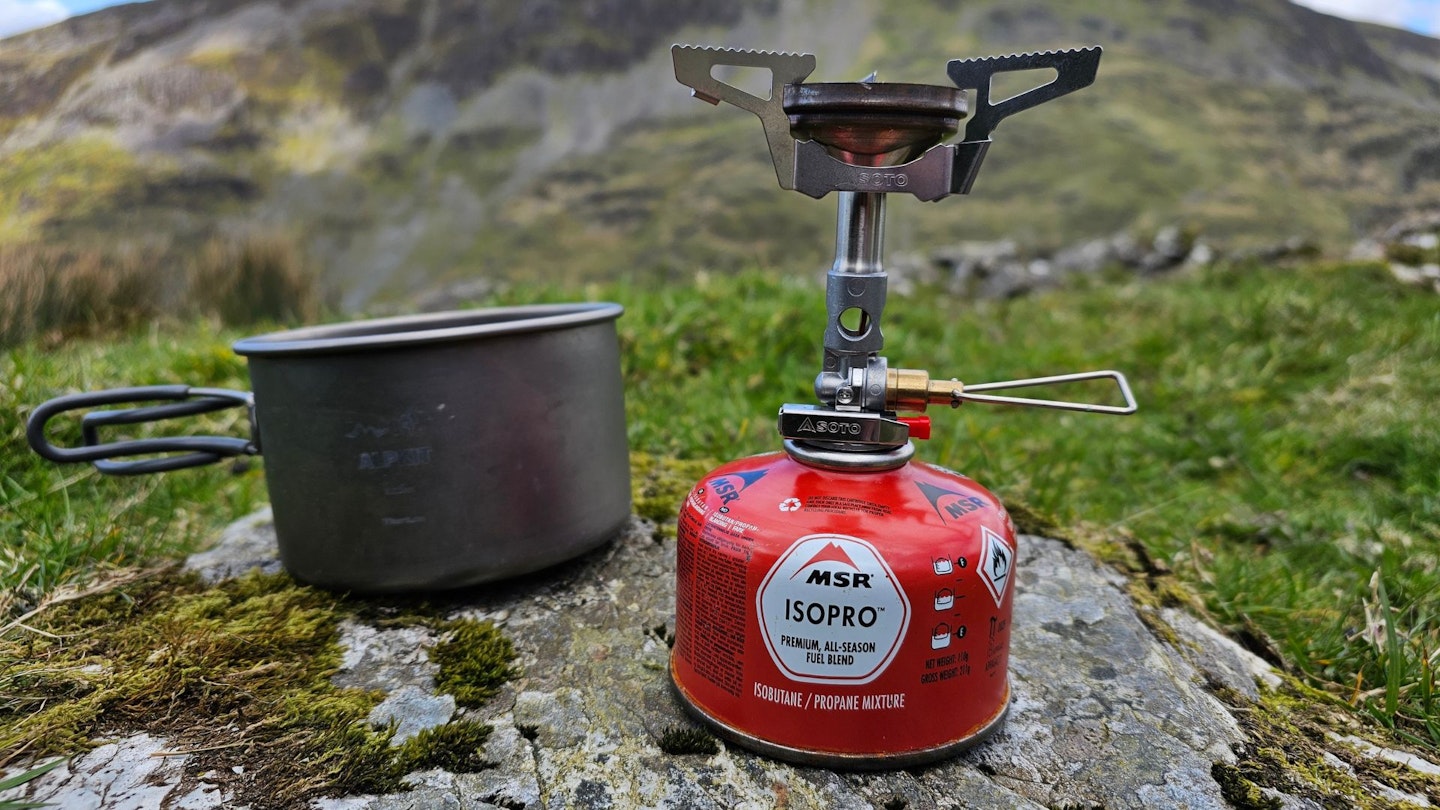 LFTO
LFTOPros
- Lightweight
- Excellent wind resistance
- Good fuel efficiency
- Fast boil times
Cons
- Not the most stable
| RRP: | £65 / $70 |
| Size (packed): | 9 x 5 cm |
| Boil time: | 2 minutes 30 seconds |
| Power output: | 3,260W (11,123 BTU/hr) |
| Weight: | 69g/2.4oz (with tri-flex pot support), 87g/3.1oz (with 4-flex pot support), plus 10g storage bag |
Design
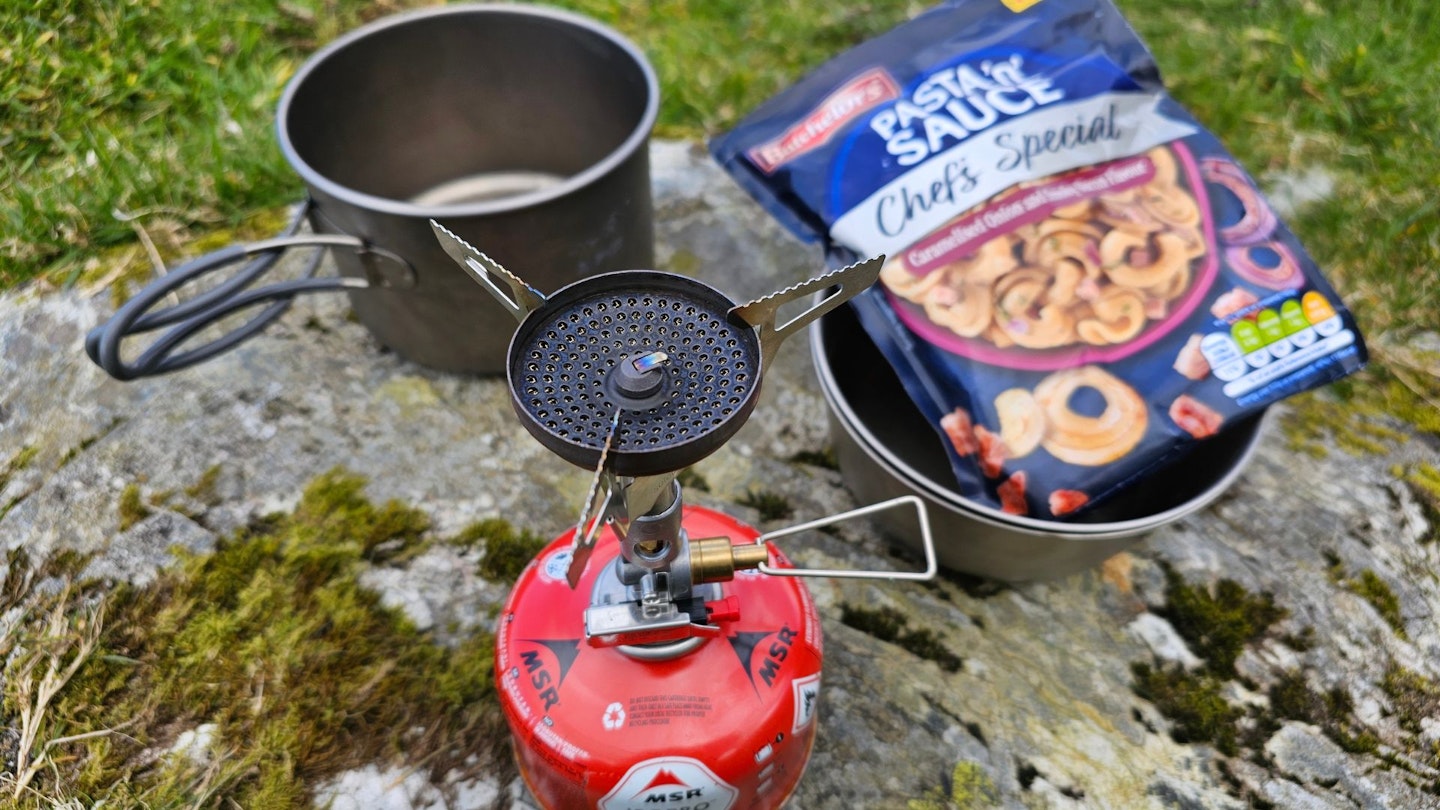
As its name suggests, the WindMaster has been designed to excel in windy conditions, which is the traditional drawback of most canister-top stoves. So, it’s a little surprising that it’s actually quite a tall stove, measuring about 9cm from the base of the pot to the top of the gas canister. But in use, it becomes apparent that a couple of clever design features do a great job of fending off breezes and gusts that would blow other stoves out.
Firstly, the burner head sits closer to the base of the pot than most rivals. This maximises heat transfer and minimises wind effect. Secondly, the burner head itself has a convex (dish-shaped) design and is protected by a small but important lip around the circumference. This basically serves as a built-in windshield. Rival brand MSR has designed the Pocket Rocket Deluxe along very similar principles.
Unusually, the WindMaster is not fitted with folding, integrated pot supports. Instead, two clip-on pot supports are available – a superlight ‘tri-flex’ pot support, which is best for simple solo use, and a larger spring-loaded ‘4-flex’ pot support, ideal for use with larger diameter pots and pans. Both types clip securely to the burner head and provide a stable cooking base.
Although the use of separate components does mean one more thing to lose (and to remember to pack on your adventures), it adds plenty of versatility too.
Like other premium backpacking stoves, the WindMaster also incorporates a micro regulator valve system. This ensures consistent performance across a wider range of temperatures, ensuring reliable performance even in cold weather or as your canister empties and internal pressure drops. You also get an in-built piezo ignition, which is fully enclosed inside the burner stem for protection and durability.
Performance

Until testing this stove, we thought a canister top stove could never be anywhere near as effective as a fully enclosed ‘all-in-one’ PCS-type design or a spider style remote canister stove, but the WindMaster’s overall performance was really impressive, especially when cooking in exposed locations. It is very difficult to blow this stove out, since the design is so wind resistant.
Our real-world boil test, performed in Snowdonia with a 6mph breeze, gave a result of 2 minutes and 30 seconds to boil half a litre of water – which was actually the quickest time of any stove we tested (though we didn’t have an integrated stove in the test for direct comparison).
For a canister-top design, this stove’s fuel efficiency is also very impressive, which makes it a good choice for extended backpacking trips when fuel is precious. SOTO claims you’ll get 90 minutes burn time from a 230g gas canister.
Overall power output is rated at 3,260W or over 11,000 BTU/hr, which puts this amongst the most powerful stoves on the market. It certainly roars into life and gives a steady blue flame whether turned up to maximum or adjusted to a lower power.

The WindMaster also has decent simmer control and a wide burner head that gives better heat distribution (meaning less burnt-on mess stuck to the bottom of your pot). If you use the smaller TriFlex pot support, you can use pots up to 10cm in diameter before they start to overhang the three arms. With the 4-Flex support, you get a broad base of just over 14cm in diameter for bigger pot sizes.
The four arms also give considerably more stability than three, which outweighs the WindMaster’s slightly top-heavy design. We almost always ending up packing the 4-flex support, since we found the added stability, versatility and convenience outweighed the minimal added weight penalty. But if you’re a committed ultralighter, having the featherweight TriFlex is a good option.
Weight and packed size
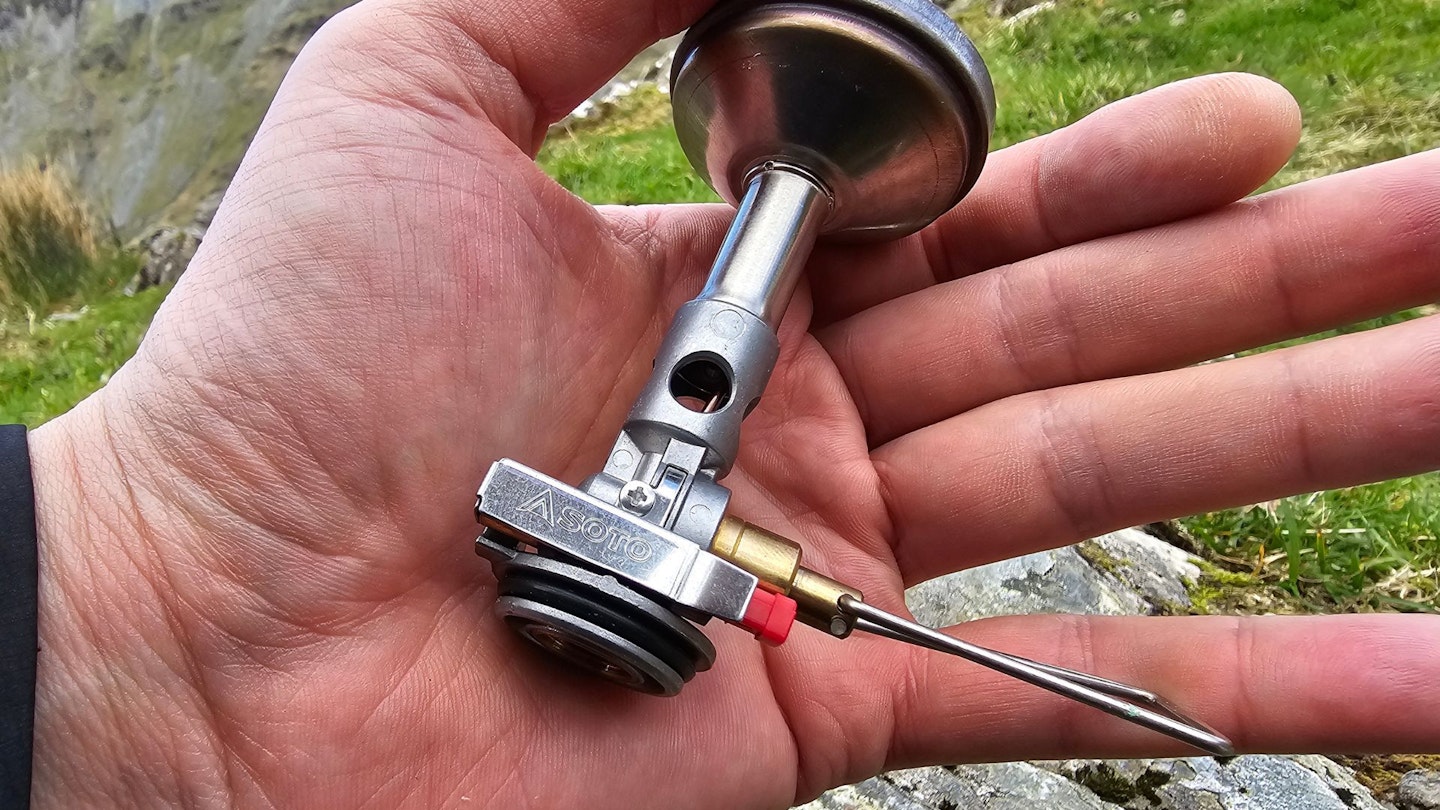
The SOTO WindMaster is commendably lightweight. On our test scales, it weighed just 69g (with the tri-flex pot support) or 87g (with the 4-flex pot support), plus an extra 10g for the drawstring storage bag.
It’s a compact little stove, though the tall burner stem and wider burner head prevent it from nesting in the smallest cooking pots and mugs. But it certainly can’t be considered bulky, which makes it a viable option for almost any outdoor adventure.
Ease of use
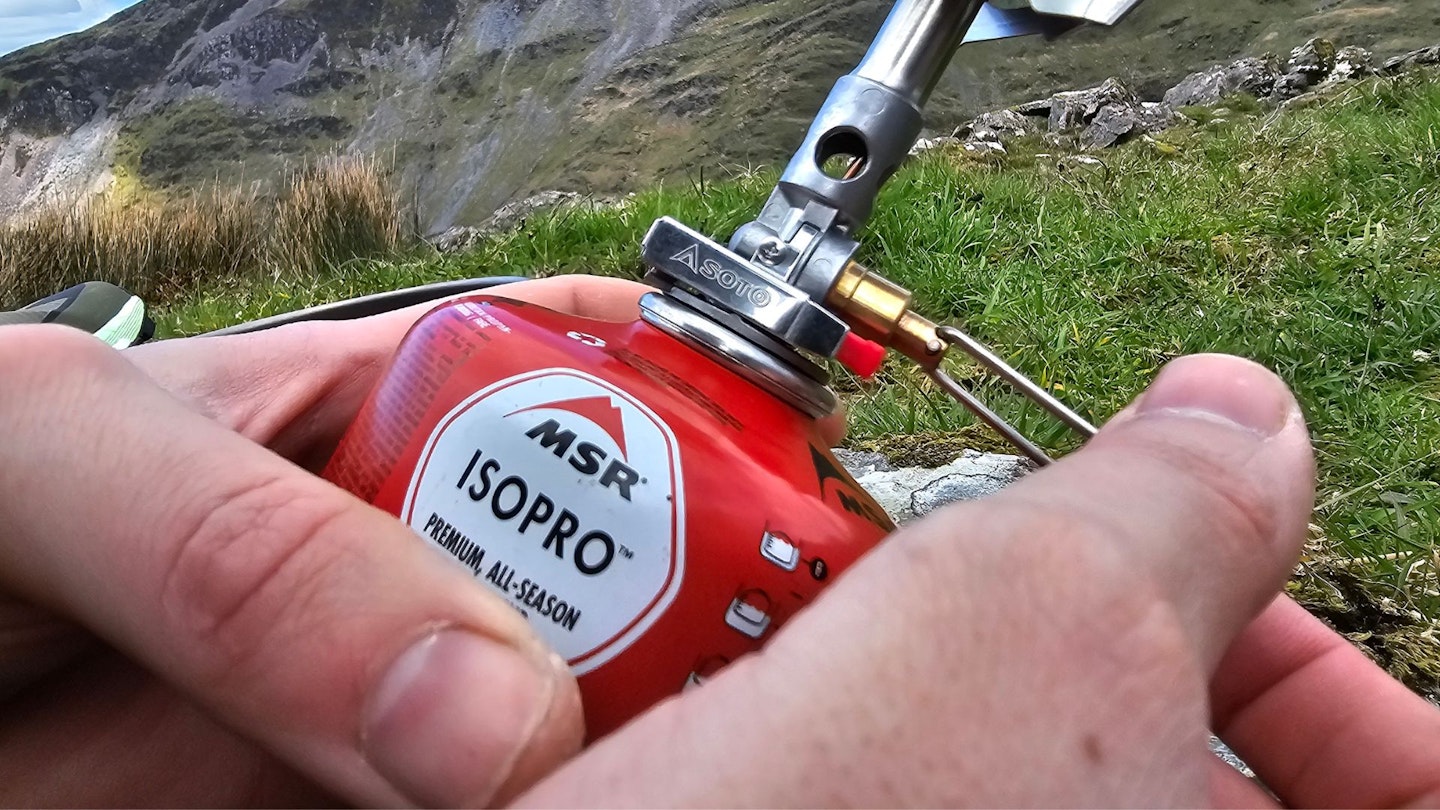
We rate the SOTO WindMaster very highly. It’s already been a previous ‘Best in Test’ winner in this category, and deservedly so. This stove is a great choice for camping in windy and cold conditions, offering speedy boil times and good fuel efficiency whatever the weather.
It’s also got a great set of features, including the option to change the pot supports from a triple stand to the four-pronged version, which adds versatility and stability in use.
The stove is easy to set up. It screws securely to the gas canister and has a 360-degree flange that rests against the lip of the canister, reducing pressure on the thread and valve. This is also sealed with a rubber O-ring to minimise the chances of any gas escaping.
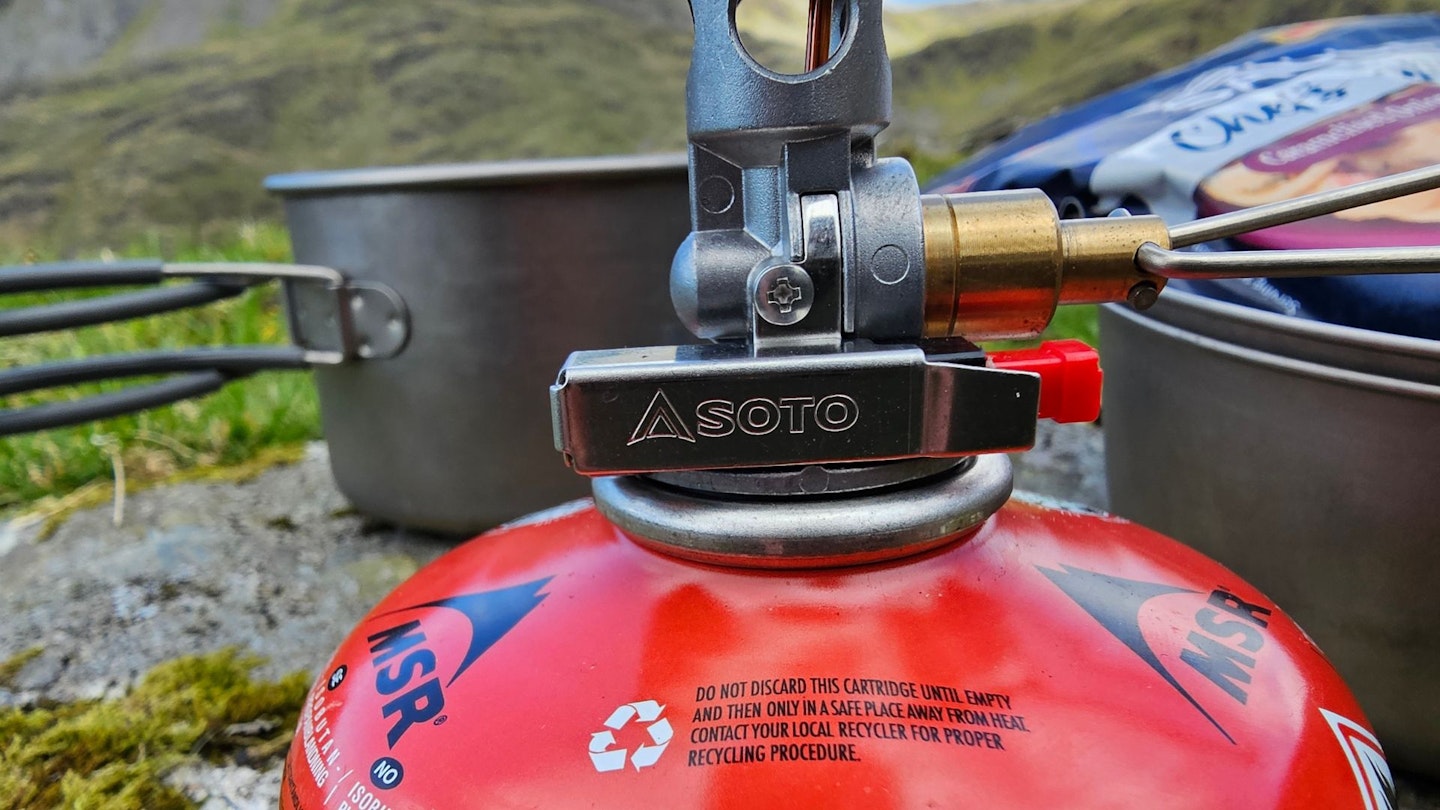
The WindMaster’s in-built piezo ignition, which is neatly enclosed within the burner stem, proved more reliable than the MSR Pocket Rocket Deluxe’s, despite their very similar design.
Its piezoelectric mechanism seems to give a brighter, more powerful spark. It also employs a metal strip rather than a delicate piece of wire, which also makes it less liable to break than the system used on the JetBoil MightyMo.
Drawbacks are really very minor indeed. Like most canister-top stoves, it can feel a little unwieldy, though this is easily fixed if you use a folding canister stand to give you a sturdier base.
Admittedly, it doesn’t simmer quite as well as the Jetboil MightyMo, but is still perfectly capable of performing lower-power cooking tasks with a little care and attention.
Lastly, you could argue that the separate pot supports are easier to lose/forget. But they add considerable versatility, which in our opinion far outweighs this minor drawback.
Price and competition
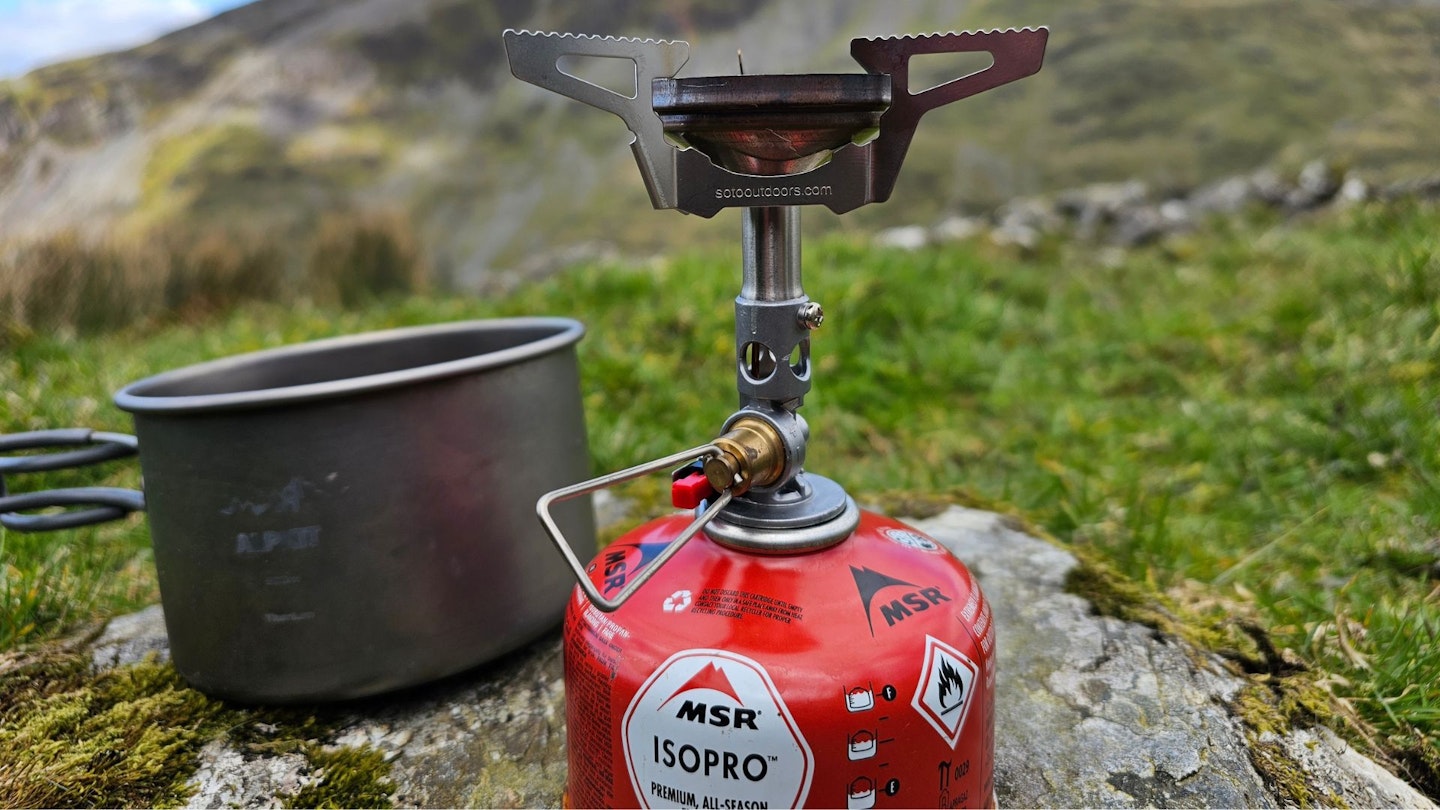
The SOTO WindMaster is priced at £65, which is very good value for such a high-performance, well-designed stove. We found it online from a few retailers for under £50, which is a buying decision that almost makes itself – snap one up!
However, we appreciate that many wild campers and backpackers are on a tight budget, and even spending fifty quid on a stove will be a luxury. If that’s the case, there are several more basic, lower-priced stoves out there – like the user-friendly Campingaz Twister Plus PZ or the superlight Vango Atom – that will do the job for most users.
The WindMaster is our top pick for more committed lightweight backpackers though. Its closest rival is the MSR Pocket Rocket Deluxe, which we field tested alongside the WindMaster.
There’s very little to choose between them, and if we were really nit-picking, we prefer the oversized wire control lever of the MSR Pocket Rocket Deluxe to that of the WindMaster’s, though there’s not much in it, since both are easy to use and grip, even with gloves on.
The Pocket Rocket Deluxe has slightly better simmer control. And the flimsy storage bag that comes with the WindMaster isn’t as good as the lined MSR bag. But in all other respects, the WindMaster is either as good or superior, whilst being a fair bit cheaper too.
Verdict
A light and compact stove with excellent wind resistance and outstanding performance, as well as an integrated micro-regulator and built-in ignition. Our top pick for lightweight backpackers.
Shop this product
How we tested the SOTO WindMaster

The reviewer for the SOTO WindMaster was Matt Jones, one of Live For The Outdoors' and Trail magazine’s regular gear testers. Matt is an experienced wild camper, backpacker and long-distance walker.
He’s completed numerous trails end to end in the UK, including the Pennine Way, the Cambrian Way, the West Highland Way and the Great Glen Way. He’s also hiked extensively in the US, Spain, Scandinavia and New Zealand.
